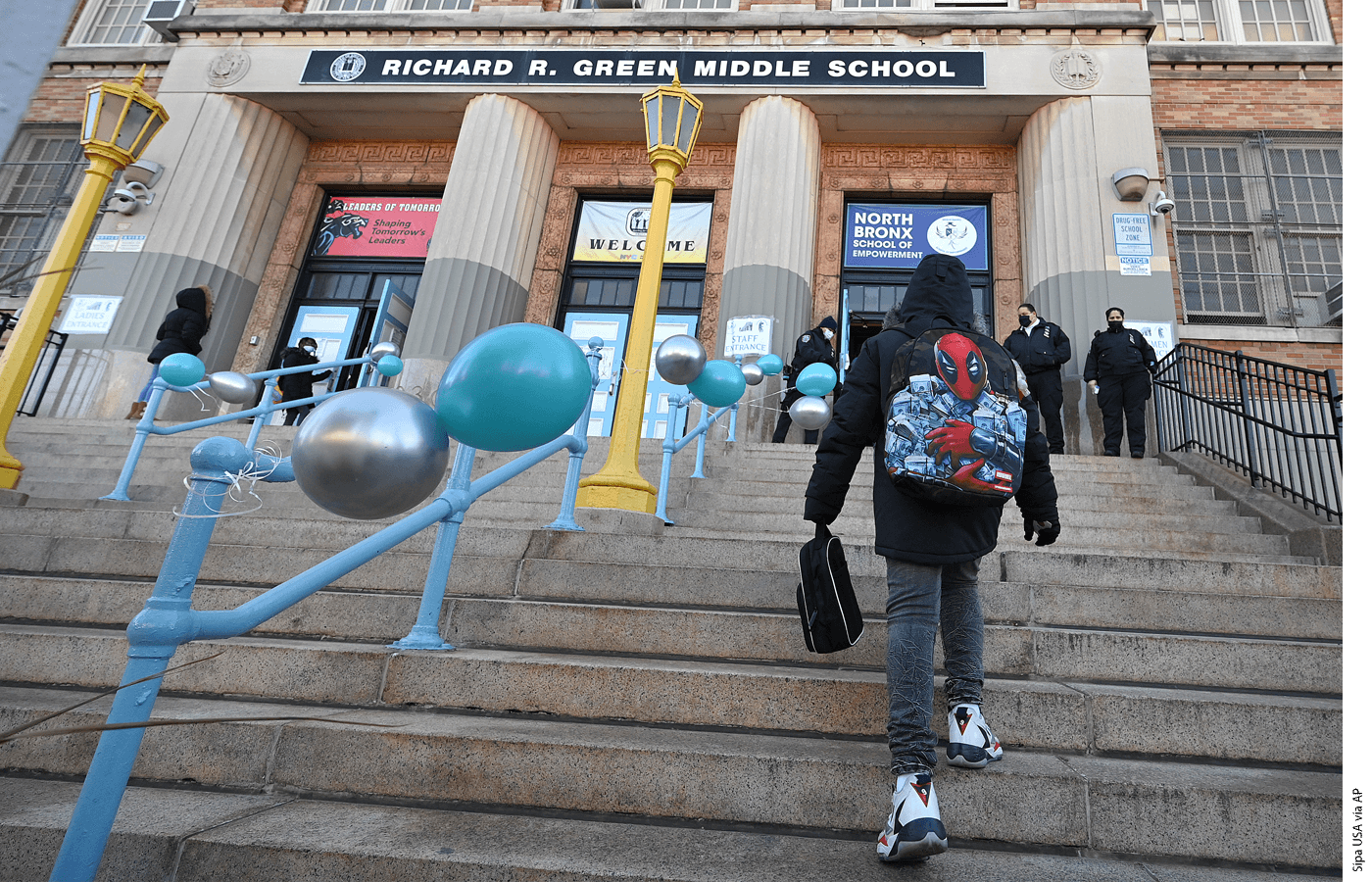
I find that when you tell someone a school costs $38,000, they usually picture a ritzy private school with lots of bells and whistles. Well, last month, the Citizens Budget Commission reported that New York City’s public schools will spend $38,000 per student next year. And yet there’s little evidence that parents or teachers think the Big Apple’s schools are delivering that bells-and-whistles education.
So, let’s try something a little different today. Instead of calling for more funds or proposing a series of reforms to tackle teacher pay, staffing, or student mental health, let’s ask how else the New York City school district might spend those funds. Can it get more bang for its buck?
This is the kind of simple exercise I urge in The Great School Rethink, and I’ve found that the results can be revealing. Indeed, I suspect the district could double teacher pay, triple the student-counselor ratio, boost support for parents and teachers, ramp up its tech abilities—and do it all within the confines of its existing budget.
Let’s see if I’ve got a case. Envision a hypothetical 4th grade classroom in a typical New York City school. Let’s ask, if given a clean slate, how we might design it. For convenience, we’ll stick with the familiar and won’t get into things like home schooling or hybrid options.
The average New York City elementary class currently has between 24 and 25 students, but a new law will reduce that to 23 in the fall. So, presume there are 23 students in the class.
Spending $38,000 per student on 23 students yields a sum of $874,000. Let’s set aside 40 percent for district administration, including facilities, maintenance, meals, utilities, transport, testing, compliance, and such. That costs our class $350,000 (and leaves the central administration with roughly $15 billion a year—or more than $15,000 per pupil).
Across the city’s public schools, there is currently 1 counselor for every 325 students. Let’s roughly triple that ratio, to 1 for every 115 students. Counselors in the city’s schools earn a bit under $70,000, on average; let’s give them a 50 percent raise to $105,000, yielding a total tab of $130,000 with benefits. The cost to our 23-student class would be $26,000.
Top-end technology, personal laptops, and appropriate support can run $350 per student, or $8,000. Let’s add an on-site dedicated IT specialist for our K-5 school (which we’ll presume has 690 students). If we figure a $120,000 salary, with benefits bringing the total cost to $150,000, the specialist will cost another $5,000—for a total tech price tag of $13,000.
Pencil in two schoolwide P.E. teachers, a schoolwide music teacher, and a 4th and 5th grade fine arts teacher (shared across six classes). If we pay each teacher $120,000 (note that we’re offering some massive pay bumps) with commensurate benefits, that’s a cost of $150,000 each. Our class’ share of the total cost comes to $40,000.
Add in the cost of a principal, three assistant principals, a school secretary, a security presence, and special education support. Estimate the campus cost at an even $2 million a year, with our class paying its proportionate share. That’s about $67,000.
We’ll create a dedicated 4th grade staffer to coordinate parent outreach, assist parents, and provide back-office/secretarial support to three 4th grade teachers. If pay is $70,000 (yielding a total cost of $90,000, with benefits), that’s $30,000 to each 4th grade classroom.
And then there’s classroom instruction. Let’s double the pay of the classroom teacher, to $160,000, at a cost of $200,000 with benefits. Just to be clear: This means that the average New York City 4th grade teacher would earn that much. And we’ll add an aide who earns $70,000 (a bit more than a starting teacher in the city earns today), at a total cost of $90,000. So classroom staff costs $290,000.
Add it all up, and it comes to $816,000, leaving a bit over $2,500 per student for additional outlays.
Now, I’m the first to acknowledge that this thought experiment has all kinds of limitations. For starters, even if it wished to do so, the district leadership can’t just shrug off existing obligations or contractual constraints. But it’s valuable to see what’s possible: that different choices could allow New York City’s schools to ramp up counseling, enhance technology, bolster arts instruction, give parents and teachers better support, and radically boost teacher pay. Seeing what’s conceivable might give us the confidence to stop settling for what’s customary.
Frederick Hess is director of education policy studies at the American Enterprise Institute and an executive editor of Education Next.
This post originally appeared on Rick Hess Straight Up.


